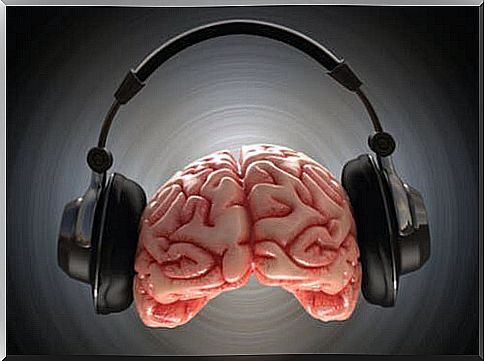What Are The Health Benefits Of Binaural Beats?

Some define binaural beats as the new “technological thing”. The goal of this auditory phenomenon is to create a sense of three-dimensionality in your brain. You can achieve this effect by generating two types of slightly different sound frequencies in each ear through headphones. Thus, you end up perceiving a third sound, one which in turn leads to a series of emotions.
These sensory stimulation sensations range from peace, well-being and stimulation. The type of experiences that are produced varies greatly from person to person. However, it seems clear that people are rarely indifferent to it.
Binaural beats are all genre, to the point that sound wave therapy emerged as an alternative approach to treating anxiety and stressful conditions.
No 100% conclusive studies support the results, which means that therapy for binaural beats is currently in the experimental phase. This does not stop thousands of people from using it every day to relax, reduce insomnia, improve concentration or just for fun.
As an example; On the website I-Doser, created by a psychologist who specializes in sound and music, binaural beats are defined as something addictive that provides enormous pleasure. Therefore, they define it as the new digital thing. However, experts agree that it can improve mood.

Binaural beats, a phenomenon with a historical background
Binaural beats stem from the fact that the right and left ears have a slightly different frequency tone, but the brain perceives them as a simple, more accelerated and uniquely pleasant tone. For example, hearing a frequency of 120 Hertz (Hz) in one ear and 132 in the other will give a binaural beat of 12 Hz.
This may seem quite sophisticated, but it is not new to the world of science. Heinrich Wilhelm Dove, a Prussian physicist, discovered this in 1839. He realized that something as simple as hearing constant tones reproduced at slightly different frequencies in each ear causes a person to perceive a different holistic sound. Dr. Dove defined this as “binaural beat”.
Since then, people have experimented with it in clinical settings. They have tried to improve a person’s sleep quality while reducing anxiety. The results over several decades are very variable, since this method works for some while others are indifferent to it.
Binaural beats to reduce anxiety and physical pain
Some people use binaural beats with the idea of reducing their own anxiety. Others who suffer from pain due to injuries, joint problems or even migraines also resort to this type of therapy.
Thus, a study conducted at the Department of Behavioral Sciences of the National Distance Education University, Dr. Miguel Garcíaen found the average degree of effectiveness. This is because binaural beats were only effective in a limited number of patients. After two weeks of listening to binaural beats for 20 minutes, these reduced only 26% of the level of anxiety and pain perception.

Binaural beats therapy for insomnia
Research results on binaural beats used in patients with insomnia are more significant. Studies such as the one conducted at Iuliu Hațieganu University of Medicine and Pharmacy in Cluj-Napoca support the effectiveness in a very specific way, as it can help you fall asleep faster.
There are no conclusive data regarding frequent awakenings or whether the sleep quality is more satisfactory and deep. Once again, there were crucial differences, as it helped some improve their quality of life with better night’s sleep, while others showed no improvement.
Relaxation and mood improvement
Listening to binaural beats for 10 minutes every day, at a frequency of 6 Hz, can improve your mood. It does this by generating a sensation similar to a meditation session in your brain. A person therefore feels more relaxed and receptive to the environment. They also get a sense of calm and balance that is able to increase motivation and positivity.
This outlines a series of improvements that are very interesting. However, we must emphasize what much of the research reveals: the results vary widely. Therefore, researchers need to investigate further to understand what the actual changes are. In this way, people can benefit significantly from this type of therapy.
The fact that the data is not unambiguous does not detract from the interest. Furthermore, you can test it to discover the specific sensory impressions it actually gives you. All you need is a pair of good headphones, and play some of the videos on YouTube on this topic. It’s always fun to immerse yourself in the fun sound universe!









